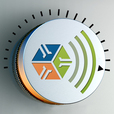
Summary: As a retailer, you have many choices about which software vendor to choose. For users, one of the biggest demands we see in the market is having the software inform you of something you don’t already know about your business. You don’t need another reporting tool giving you another report with the same numbers. You want something different. Something that fills in the missing pieces of the puzzle. Retailers need a solution that can help minimize the effort necessary to identify controllable factors that can be translated into action. There are 3 categories of discoveries that a solution should provide you. These are “known/knowns,” “known/unknowns,” and “unknowns/unknowns.” These categories are determined based off of whether or not your organization knows there is an opportunity. More importantly, it is how these opportunities are used to generate value, by finding and acting on opportunities correctly within your systems, processes, or personnel. In the first of this series we will start with the known/knowns. These are opportunities that you are usually aware of within your organization. Retailers are able to find them, but it takes time and resources to do so. In most cases, the retailer is not being efficient or effective in identifying these opportunities, and this is where improvements can be made in the “known/known” category. Improving efficiency means the retailer does not need to waste time searching for the known opportunity, sifting through multiple systems and reports to try and identify its source. It also means that you will have everything in one place, and the opportunity will be pushed to the right user rather than a user trying to find opportunities. Pattern recognition software boosts efficiency by accumulating occurrences, automatically alerting the retailer to a problem. If you compare pattern recognition to legacy EBR (Exception Business Reporting) methods you find that there is a significant increase in the quantity of alerts created by EBR. Additionally, many of the alerts end up being false positives and the retailer is forced to waste time and resources tracking them down. Real efficiency and effectiveness is having all the necessary data in a single, easy to use system that will provide “true positive” opportunities. To better understand the “known/known” category, we can look at an example of an opportunity identified through pattern recognition. The retailer had a very lenient return policy, which they were proud of because it helped stress their focus on customer service. In the past, they only focussed on their high return vs. sales rates. The average return rate was about 7% of sales for all products. Whereas it was identified that one product was being returned at a rate of 18% across multiple stores within a region. A pattern was created to analyze returns vs. sales, correlated with returns vs. damages, to minimize false positives and properly direct associates. The pattern allowed the retailer to quickly discover that the entire product batch was damaged. Since the high damage rate was across multiple stores, it was determined the issue stemmed from the manufacturer. This entire issue was found and resolved within a week of go-live with the retailer’s data. The quick response allowed the remaining product to be pulled from the shelves before they were sold and returned, assuring increased customer satisfaction by reducing the returns that would have occurred. Moreover a new batch of the product was expedited and sales were in-line with expectation as well.
